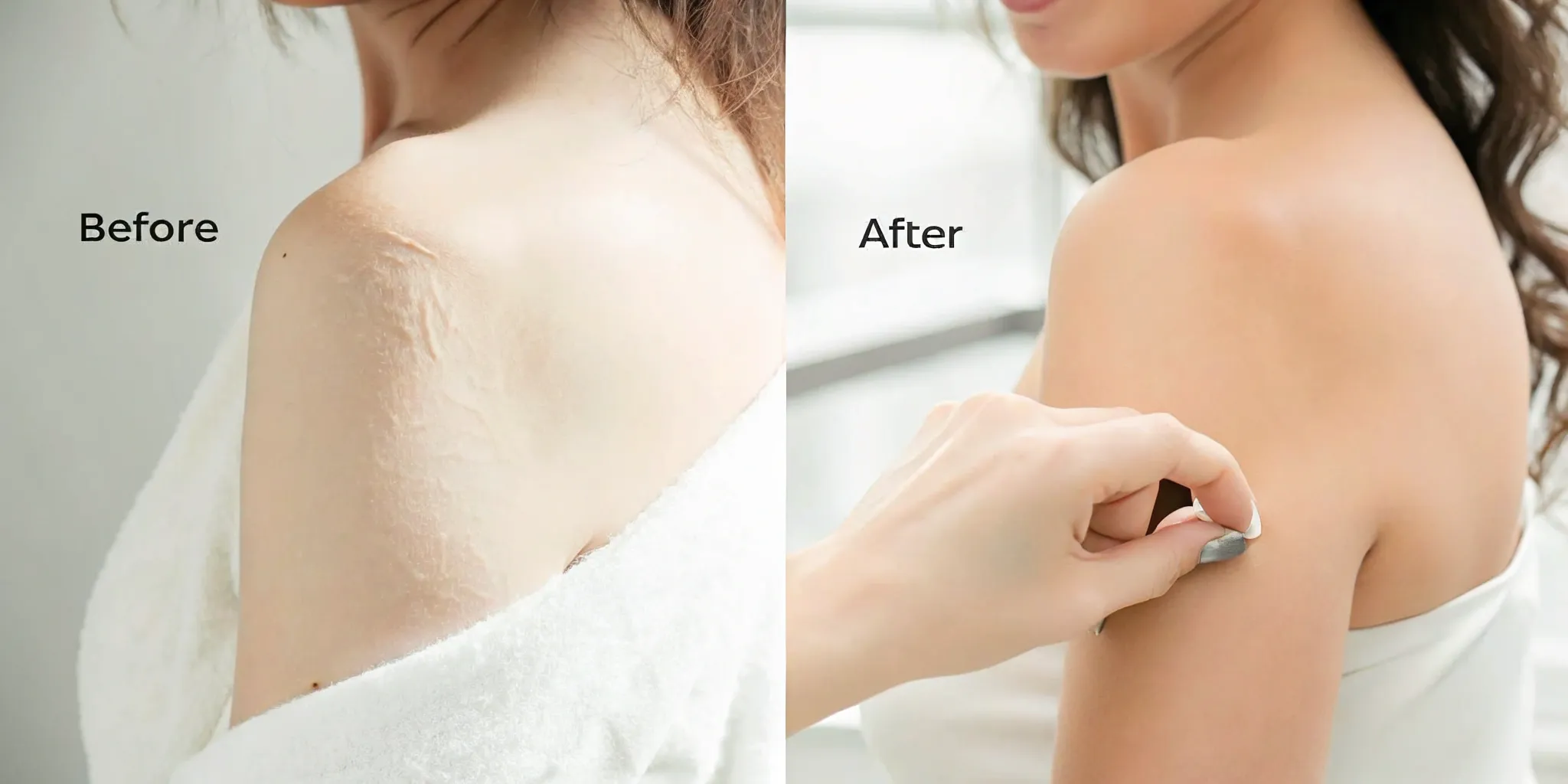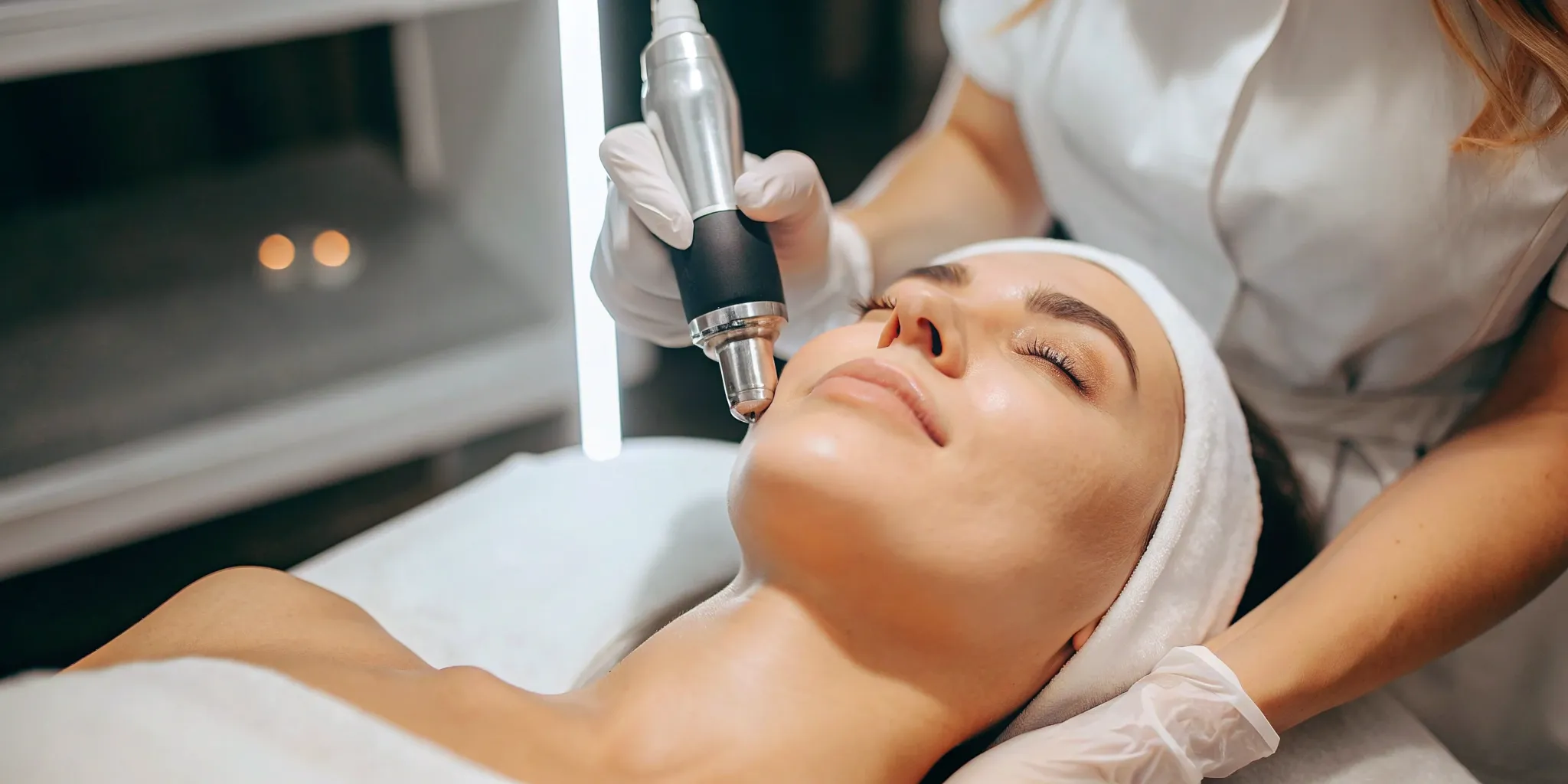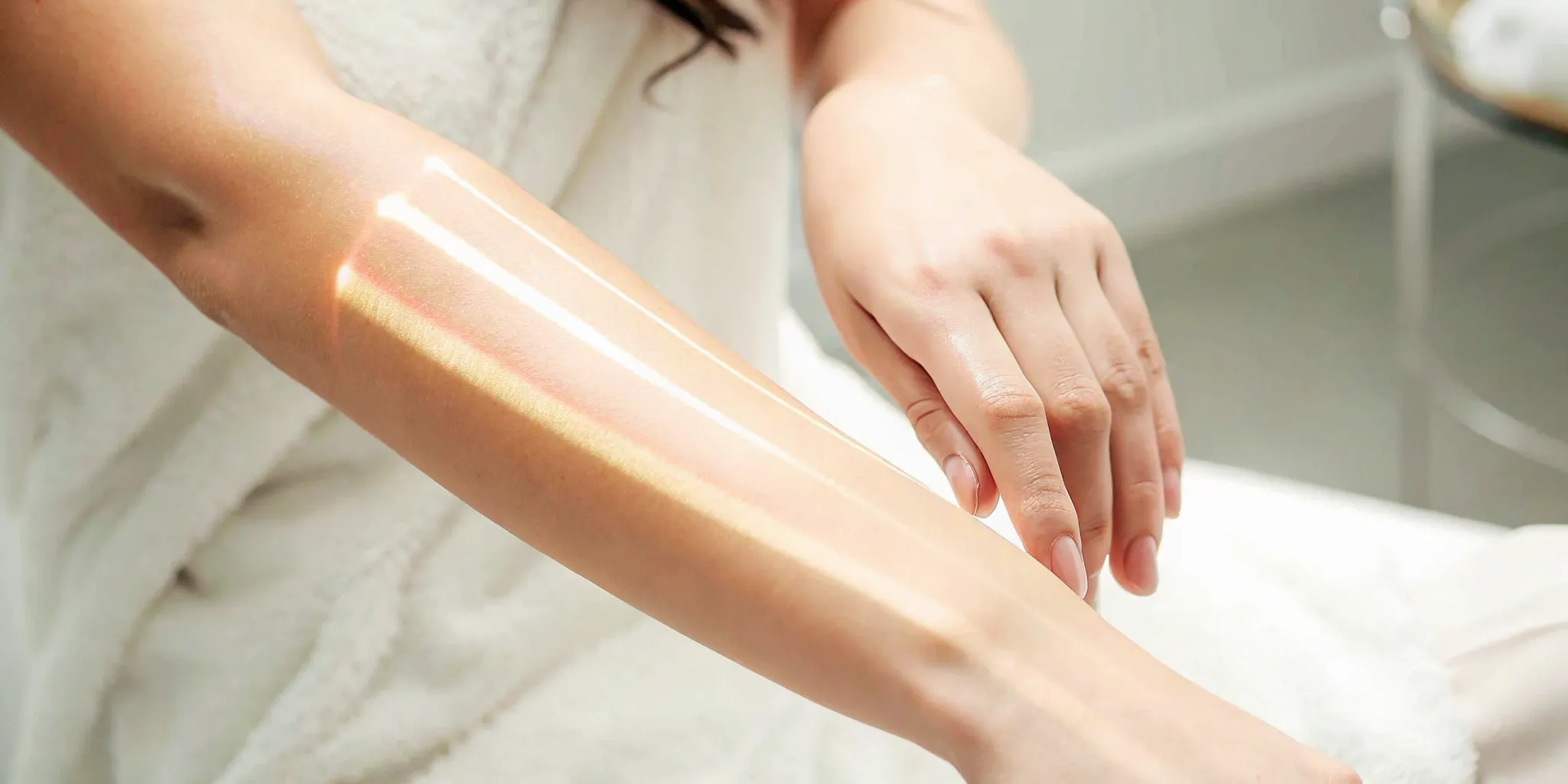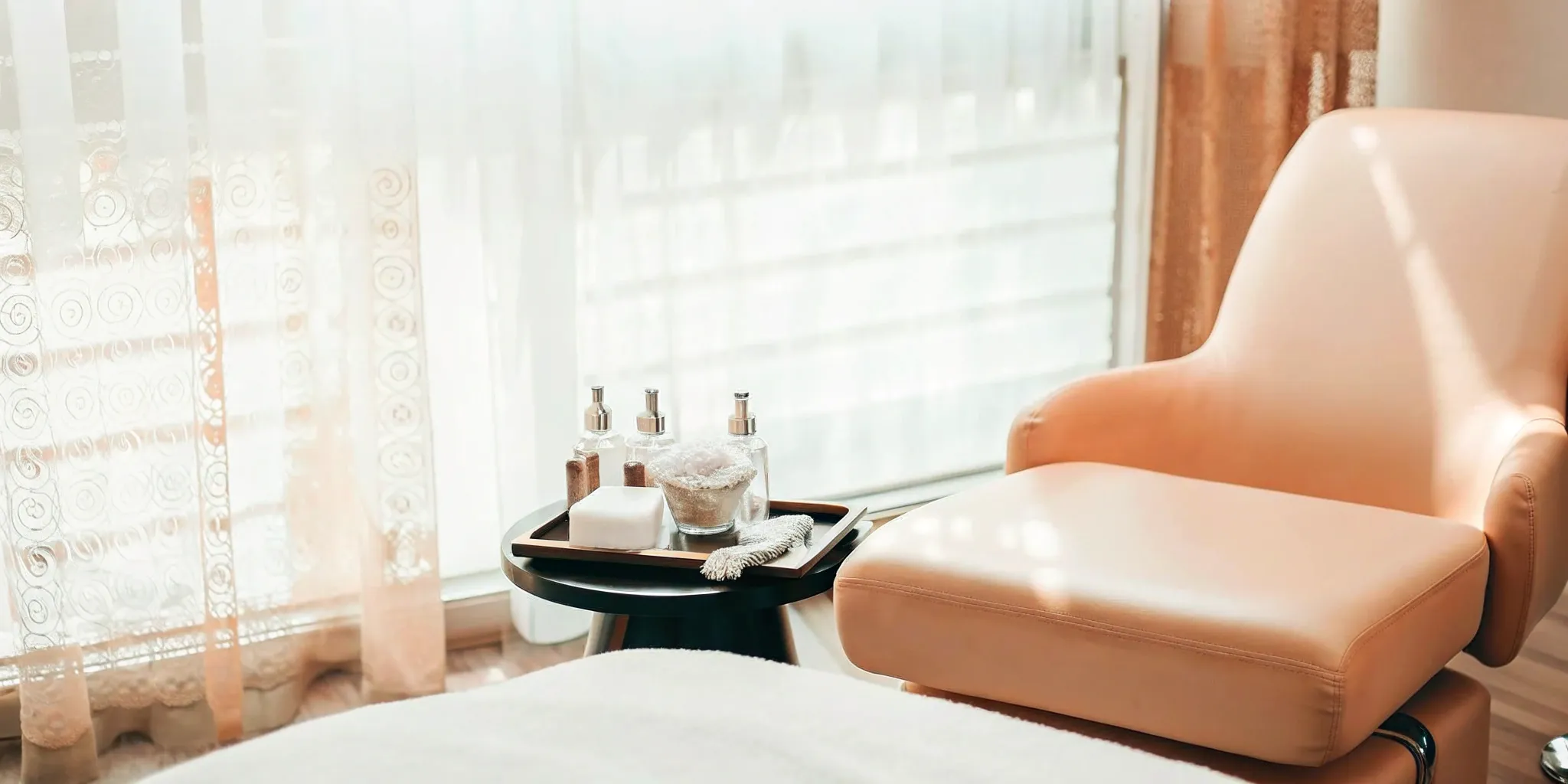Blonde hair, don’t care? When it comes to laser hair removal, blonde hair can present unique challenges. Traditional laser treatments often struggle with lighter hair colors due to their lower melanin content. But that doesn’t mean you’re out of luck. This article explores the world of laser hair removal for blonde hair, providing insights into the latest technologies and alternative methods. We’ll discuss the science behind laser hair removal, the limitations and potential of current treatments, and what you can realistically expect. Whether you’re looking for long-term hair reduction or a permanent solution, this guide will help you navigate the options and make informed decisions.
Key Takeaways
- Laser hair removal for blonde hair is possible with the right technology. Nd:YAG and diode lasers are more effective for lighter hair colors than traditional lasers. Be sure to choose a provider who offers these advanced options.
- A professional consultation is essential before starting any laser hair removal treatment. This allows experts to assess your hair and skin type and create a personalized plan. It’s also the time to discuss realistic outcomes and costs.
- Explore alternative hair removal methods if laser treatment isn’t the best fit. Electrolysis offers a permanent solution for all hair colors, while waxing and threading provide temporary hair removal, particularly for facial hair.
What is Laser Hair Removal for Blonde Hair?
Laser hair removal has become a popular way to reduce unwanted hair, but it’s essential to understand how it interacts with different hair colors, especially for those with blonde hair. This section clarifies how laser hair removal works and why hair color plays a significant role.How Laser Hair Removal Works
Laser hair removal uses concentrated light energy to target the pigment (melanin) within the hair follicle. This light converts to heat, damaging the follicle and inhibiting future hair growth. It’s like a precise beam of light zeroing in on the hair root. For the best results, selecting the right laser type and working with a skilled technician at a reputable medspa like Ultimate Image MedSpa is crucial. Different lasers have varying wavelengths and energy levels, making some more suitable for specific hair and skin types. Experts emphasize the importance of these factors for successful treatments.Why Hair Color Matters
The effectiveness of laser hair removal depends heavily on the amount of melanin in your hair. Melanin gives hair its color. Darker hair colors, like brown or black, contain more melanin, allowing the laser to effectively target and treat the hair follicle. Lighter hair colors, such as blonde, gray, or red, have significantly less melanin, especially eumelanin, the pigment lasers target. This lower melanin content makes it harder for the laser to zero in on the hair follicle, potentially leading to less effective results. This is why traditional laser hair removal methods are often less effective on lighter hair.Challenges of Laser Hair Removal for Blonde Hair
Laser hair removal can feel like a miracle, but it does have its limitations, especially for those with blonde hair. Understanding these challenges upfront can save you time, money, and potential disappointment. Let’s break down why laser hair removal can be tricky for lighter hair colors.Low Melanin Content
Laser hair removal works by targeting the pigment (melanin) in hair follicles. The laser’s energy is attracted to the melanin, which absorbs the light and converts it to heat, effectively disabling the follicle. Blonde hair, however, contains lower levels of eumelanin, the type of melanin that lasers target most effectively. This makes it harder for the laser to deliver the necessary energy to disable the hair follicle. As explained by SEV Laser, these hair colors simply don’t have enough of the pigment lasers need to be truly effective. It’s like trying to hit a small, dimly lit target – much more challenging than a large, brightly lit one. This is why traditional laser treatments often yield less effective results for blonde, red, and gray hair.Reduced Effectiveness
Because of this lower melanin content, laser hair removal for blonde hair often requires more sessions and may not achieve complete hair removal. While some reduction is possible, it’s unlikely you’ll see the same dramatic results as someone with darker hair. Pure Skin Laser Center points out that the results for light hair are less predictable and often less effective. You might see some thinning of the hair or a slower regrowth rate, but total hair removal can be elusive. It’s important to have realistic expectations going into treatment. Finding a provider with experience treating lighter hair is key.Potential Misrepresentation by Clinics
Unfortunately, not all clinics are upfront about the limitations of laser hair removal for blonde hair. Some might overpromise results. A Reddit discussion highlights this issue, with many users sharing stories of clinics misrepresenting the effectiveness of laser treatments for light hair. Do your research and ask lots of questions during your consultation. A reputable clinic will be honest about what you can realistically expect and will discuss alternative options if laser hair removal isn’t the best fit. Don’t hesitate to seek second opinions and look for clinics with experience treating blonde hair.Advanced Technologies for Lighter Hair
Traditionally, laser hair removal has been less effective on lighter hair colors like blonde, red, and gray. This is because older laser technology targets the pigment (melanin) in the hair follicle. Lighter hair has less pigment, making it harder for the laser to effectively disable the follicle. But thanks to advancements in laser technology, permanent hair reduction is now more achievable for those with lighter hair. Let’s explore some of these exciting developments.Nd:YAG and Diode Lasers
While older Alexandrite lasers often struggle with lighter hair, newer lasers like Nd:YAG and diode lasers are proving much more effective. These lasers use different wavelengths of light that can better target the hair follicle, even with less pigment. Nd:YAG lasers, in particular, are known for their ability to bypass surface melanin and penetrate deeper into the skin, reaching the hair follicle itself. This makes them a safer and more effective option for those with lighter hair and skin tones. Diode lasers also offer a good solution, delivering energy effectively to the follicle with less risk of skin damage.Longer Pulse Duration Techniques
Another key advancement is the development of lasers with longer pulse durations. The pulse duration refers to the length of time the laser energy is applied to the hair follicle. Longer pulses allow for a more gradual heating of the follicle, which can be more effective for lighter hair. This gentler approach minimizes damage to the surrounding skin while still effectively disabling the hair follicle. This is particularly beneficial for individuals with sensitive skin.Experimental Pigment Enhancement Methods
While still in the experimental stages, some clinics are exploring methods of enhancing the pigment in lighter hair follicles before treatment. This could involve applying a topical solution to the treatment area. While these techniques hold promise, it’s important to understand that they are not yet widely available and results can vary. If you’re considering this option, do your research and choose a reputable clinic with experienced practitioners. Ask questions about the procedure, potential risks, and expected outcomes.What to Expect: Results and Treatment Process
So you’re considering laser hair removal for your blonde hair? Great! Understanding the process and having realistic expectations is key to a positive experience. Let’s break down what you can expect before, during, and after your treatment at Ultimate Image MedSpa.Realistic Outcomes for Blonde Hair
It’s important to be realistic about the results of laser hair removal for blonde hair. Because lighter hair has less melanin, the pigment that the laser targets, complete removal can be more challenging. While total elimination might not be achievable, you can still see a significant reduction in hair growth. Think of it as managing and minimizing hair rather than eradicating it completely. Many clients with blonde hair experience noticeable thinning and finer regrowth, making upkeep much easier. We’ll discuss this in more detail during your consultation at Ultimate Image MedSpa, so we can set the right expectations from the start. For more information on our services, visit our website.Extended Treatment Duration
Due to the lower melanin content in blonde hair, more treatment sessions are typically needed to achieve desired results. While those with darker hair might see results in four to six sessions, you might require eight or more. This isn’t a sign that the treatment isn’t working; it simply means we need more time to target those lighter hairs effectively. We’ll create a personalized treatment plan for you at Ultimate Image MedSpa based on your hair and skin type. You can contact us to schedule a consultation.Potential Side Effects
Laser hair removal is generally safe, but like any cosmetic procedure, it has potential side effects. Temporary redness and slight swelling around the treated area are common and usually subside quickly. Less common side effects can include minor skin discoloration or blistering. Our team at Ultimate Image MedSpa prioritizes your safety and comfort. We’ll discuss how to minimize risks and ensure proper aftercare during your consultation. Following our pre- and post-treatment guidelines, such as avoiding sun exposure, is crucial for minimizing any potential side effects. You can learn more by exploring our laser hair removal page.Alternative Hair Removal Methods
If laser hair removal isn’t ideal for your blonde hair, you have other options. Let’s explore some alternative hair removal methods.Electrolysis: A Permanent Solution
Electrolysis offers a permanent hair removal solution, especially for light-colored hair like blonde or gray. Unlike laser treatments that target pigment, electrolysis uses a tiny needle to deliver an electric current to the hair follicle, destroying its growth cells. This makes electrolysis effective regardless of hair color. While viable, it’s typically slower, can be more painful, and often requires more sessions than laser hair removal. If you’re considering electrolysis, talk to a licensed electrologist. Some find electrolysis worthwhile after unsuccessful laser treatments.Waxing and Depilatory Creams
Waxing and depilatory creams offer temporary hair removal. Waxing involves applying warm wax and quickly removing it, pulling hair from the root. Depilatory creams use chemicals to dissolve hair at the skin’s surface. While convenient, laser hair removal is generally safer and more effective long-term. Waxing can be less effective on blonde hair because of its fine texture and sometimes less visible contrast against the skin.Threading for Facial Hair
Threading is a popular choice for facial hair, particularly for finer or lighter hair. This technique uses a twisted thread to trap and remove hairs from the follicle. It’s a more natural approach than chemical-based methods and offers precise hair removal, making it suitable for shaping eyebrows and removing unwanted facial hair. Threading might not be ideal for larger areas, but it’s a good option for precise and relatively painless facial hair removal.Costs and Considerations
Pricing Factors for Blonde Hair Treatment
Laser hair removal pricing typically works on a per-session basis, with the total cost depending on several factors. Larger areas like legs or backs usually cost more than smaller areas like the upper lip or underarms. Because blonde hair has less melanin, it often requires more sessions than darker hair for effective treatment. This can make the overall cost higher. A consultation with your provider is essential to discuss realistic expectations and potential costs upfront. Be wary of clinics advertising low per-session prices, as you might end up needing significantly more sessions, increasing the final price.Long-Term Value Assessment
While the initial investment for blonde hair removal might seem higher, consider the long-term benefits. Even if complete removal isn’t achievable, significant hair reduction can save you time and money on temporary hair removal methods. Electrolysis is a permanent solution for all hair colors, but it requires more sessions and can be more time-consuming. Weigh the pros and cons of each method based on your budget, pain tolerance, and desired results. If your goal is to reduce hair growth and minimize upkeep, laser treatments could be a worthwhile investment. Keep in mind that some very fine blonde hairs might remain even after successful laser treatment. A consultation with the professionals at Ultimate Image MedSpa will help you determine the best approach for your individual needs and budget.Prepare for Your Treatment
Getting ready for laser hair removal? A little prep work goes a long way. Here’s how to ensure your treatment is as effective and comfortable as possible.Importance of Professional Consultation
Before starting any laser hair removal treatment, schedule a consultation with a qualified professional at a reputable med spa like Ultimate Image MedSpa. We offer personalized consultations to assess your skin and hair type, which helps us determine the ideal treatment plan. A thorough consultation is crucial for managing expectations and ensuring you’re a suitable candidate for laser hair removal. During your consultation, ask questions and discuss any concerns. Open communication with your provider is key to a successful outcome. For more information on laser hair removal for blonde hair, check out this informative article.Pre-Treatment Care Tips
Once you’ve had your consultation, there are a few things you can do to prepare for your session. Sun exposure can make your skin more sensitive and affect treatment efficacy, so avoid sun exposure before and after your treatment. We’ll provide detailed pre and post-treatment instructions during your consultation, so listen closely and follow them carefully. This will help minimize potential side effects and optimize your results. Being prepared and following expert advice contributes to a smoother, more effective treatment process.Post-Treatment Care and Maintenance
Immediate Aftercare Practices
Right after your laser hair removal session, your skin might feel a little sensitive, similar to a mild sunburn. We’ll give you detailed aftercare instructions at Ultimate Image MedSpa, but generally, you’ll want to avoid direct sun exposure and apply a soothing lotion or aloe vera to the treated area. Skip hot tubs, saunas, and intense workouts for at least 24 hours. This gives your skin time to calm down.Long-Term Hair Management Strategies
Managing blonde hair growth after laser treatments requires patience. While you’ll likely see a noticeable reduction, total hair removal with laser treatments alone can be tricky for lighter hair colors. This is because the laser targets pigment (melanin) in the hair follicle, and blonde hair has less of it. Be prepared for more sessions than someone with darker hair. Electrolysis is a good alternative if you’re aiming for complete removal and laser treatments aren’t fully effective. It’s always best to chat with the professionals at a reputable medspa like Ultimate Image MedSpa. We can assess your hair and skin to create the most effective treatment plan. We’re here to help you achieve your goals, whether that’s significant hair reduction or exploring other options.Choose the Right Hair Removal Method
Finding the right hair removal method for blonde hair requires a bit more research than for darker hair. Traditional laser hair removal targets melanin, the pigment responsible for hair color. Blonde, gray, and red hair have lower melanin levels, making traditional lasers less effective. This lower melanin content makes it harder for the laser to target and destroy the hair follicle, as explained in SEV’s article on laser hair removal for light hair. Fortunately, advancements in laser technology, like Nd:YAG and Diode lasers, offer better results for lighter hair. These lasers are designed to work with lighter pigments, increasing the likelihood of successful hair reduction, as highlighted by Pure Skin Laser Center. Even with these advancements, it’s important to have realistic expectations. You may need additional sessions compared to someone with darker hair. If laser hair removal doesn’t provide the desired outcome, electrolysis offers a viable alternative. Electrolysis uses a tiny needle to deliver an electric current to the hair follicle, destroying it. This method works for all hair and skin colors. However, electrolysis can be more time-consuming and may cause more discomfort than laser treatments, as noted in SEV’s discussion of hair removal options. Before making a decision, schedule a consultation with a qualified provider at Ultimate Image MedSpa. We’ll assess your hair and skin type to recommend the most suitable hair removal method. We’ll discuss your options, explain the process, and help set realistic expectations, so you can feel confident in your choice.Related Articles
- Laser Hair Removal FAQs | Ultimate Image MedSpa in Texas
- Laser Hair Removal Treatment in Texas – Ultimate Image MedSpa
- Laser Hair Removal for Face: A Complete Guide – Ultimate Image MedSpa







